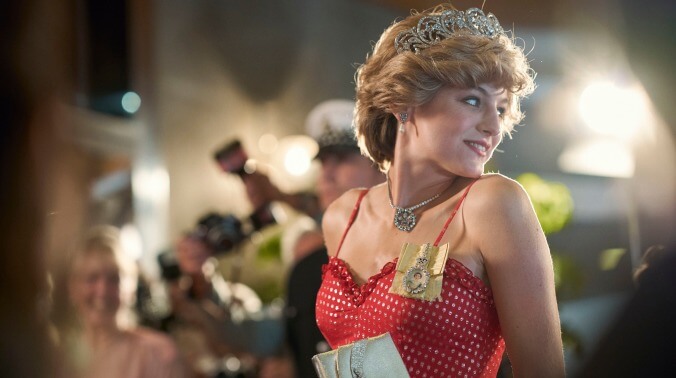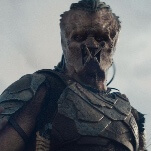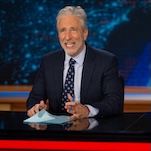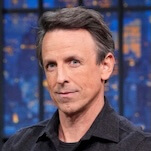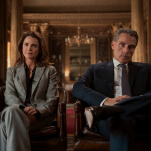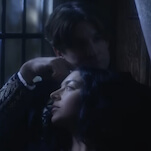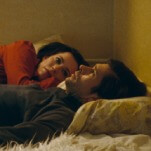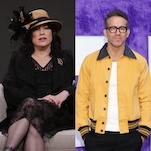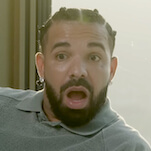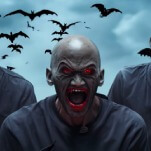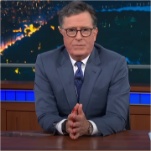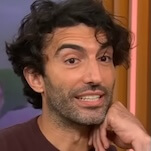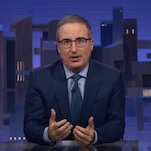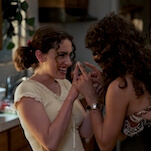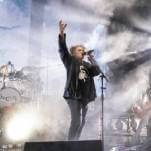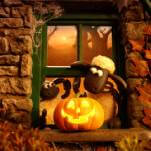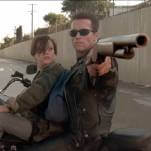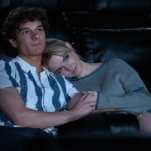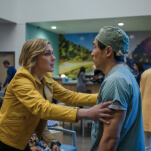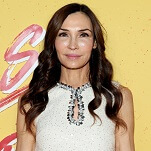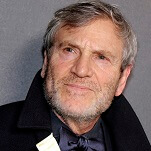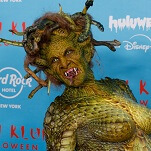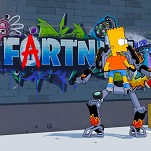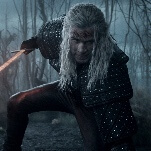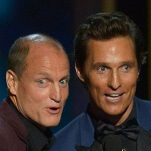Photo: Des Willie/Netflix
The Crown has a natural tendency towards dourness. There are times when the show seems to suggest that the Windsors have never experienced so much as a single moment of joy in their privileged, constrained lives. “Terra Nullius” proves how much value there is in mixing things up a bit. This episode contains some of the sweetness scenes in The Crown’s history, as Charles and Diana use a royal tour to give their marriage a fresh start. It’s both startling and moving to watch Charles confess that he loves Diana—an admission that seems to take him by surprise and full-on stop her in her tracks. It establishes a new, warmer dynamic between the two, capped off by a genuinely lovely ballroom dance to “Can’t Take My Eyes Off You.” The cheerfully romantic tone provides a welcome change of pace for one of the season’s major throughlines. And it makes it all the more heartbreaking when the storm clouds inevitably return.
With the official introduction of “beautiful” baby Prince William, The Crown is now on its fourth generation of royals (fifth if you include Elizabeth’s grandma, Queen Mary). And the upside of the way this show races through history is that we can now compare entire generational shifts that have taken place since the series began. As Charles and Diana head off on a six-week tour of Australia and New Zealand, Elizabeth can’t help but reflect on her own 1954 royal tour of the region. And since we saw that tour firsthand in the first season episode, “Pride & Joy,” we’re given the same opportunity to reflect on the past three decades of monarchy too.
The biggest difference is that while Elizabeth and Philip happily left a 6-year-old Charles and a 4-year-old Anne back in England for five month, Diana absolutely insists on bringing William along with her. She (understandably) won’t even agree to the compromise of leaving her nine-month-old at a New South Wales sheep station for the most arduous two-week leg of the tour. It’s a genuine maternal impulse on her part; being a mother has clearly given Diana a more embolden sense of purpose within her strange new life. But it’s also a decision that plays incredibly well in the press. Just as the young Queen Elizabeth was once seen as a breath of fresh air for the British monarchy in the 1950s, Diana’s warm, tactical relationship with her son humanizes the royal family for the 1980s.
“Terra Nullius” does a great job capturing the fact that while Diana’s feisty, coquettish personality is authentic, she’s also aware that her authentic self plays very well to the public. As Elizabeth puts it in their tense final conversation, “I think we do all know when we’ve played to the gallery excessively.” Diana can work a crowd with a raised eyebrow. Meanwhile, poor Charles struggles to earn even a single laugh with his carefully planned punchlines. The contrast couldn’t be clearer, especially to Charles himself. (For what it’s worth, I thought his “in Britain, we call that summer” rain joke was funny.)
In her defense, Diana isn’t trying to be unhelpful. In fact, Australian Prime Minister Bob Hawke credits her with singlehandedly keeping the country loyal to the British monarchy—which was the entire purpose of the royal tour to begin with. Yet Diana misjudges just how sensitive her husband is about his desire to be “heard, understood, and appreciated.” She understands that he needs that affirmation in their marriage because she need it too. But as someone who’s been publicly adored ever since her royal journey began, she can’t understand how difficult it is for him to not be appreciated by his people. There’s a naïveté to Diana that’s both deeply sympathetic and also slightly annoying—just as Charles’ need for public validation is both relatable and infuriating.
While “Terra Nullius” offers a welcome wrinkle in the ongoing Charles and Diana saga, it also struggles with pacing at times. Peter Morgan’s script takes too long to get to the “I love you scene” and then just sort of peters out at the end. Thankfully, the episode is elevated by some superb direction from first time Crown helmer Julian Jarrold, who gives the hour a heightened, almost surreal quality at times—like the way Prime Minister Hawke passes through an abstract black space as he enters a TV news set. In one of the show’s best shots to date, Jarrold tracks a swimmer across a rooftop pool only to tilt his camera down to reveal a bird’s eye view of the high-rises full of people celebrating Charles and Diana’s arrival. It’s an image that’s both gorgeous and completely disorienting, which is a perfect metaphor for what it’s like to live in the Windsor family fishbowl.
Indeed, Diana provides a fascinating parallel for a whole bunch of The Crown’s royal and would-be-royal characters. Margaret and Anne both feel they had her sense of originality crushed out of them by the demands of the monarchy. And Diana’s scene-stealing razzle dazzle is most overtly contrasted with Camilla, who knows just how to share the spotlight with Charles in a way that gives her a chance to shine but always lets him deliver the final punchline. Maybe the most interesting Diana comparison is Philip, who took two whole seasons (and several major accommodations) to finally understand that his role is just to play a supportive number two to his more important spouse.
The fact that Elizabeth and Philip are now happily settled into a comfortable marriage makes it seem somewhat less ridiculous that Elizabeth assumes Charles and Diana will eventually be able to move past their marital troubles too. But Elizabeth is also letting distance cloud her memories. She reminisces about the glory of her own royal tour and how the stamina required brought her and Philip closer together as a team. What she ignores (or perhaps simply forgets) is that Australia was also the site of one of their worst fights—when Philip cruelly insulted her relationship to her father and she was caught by the press throwing a tennis racket at him. If Elizabeth could tap into those memories the way we can revisit that episode, perhaps she’d be more sympathetic to Diana’s palpable pain.
Instead, as with the family lunches in “Favourites,” there’s a clear limit to Elizabeth’s ability to convey empathy. She has absolutely no instinct for what to do when met with a desperate, protocol-breaking hug from Diana. While Diana longs for the maternal warmth of someone who can personally relate to being a young woman suddenly thrust into the royal spotlight, she doesn’t understand that Elizabeth’s ultimate allegiance isn’t to womanly solidarity or even to her own children—it’s to the institution of the Crown. Charles has his role to play and Diana has hers, and it doesn’t really matter who’s best suited to what. They must either bend or break themselves to fit.
Stray observations
- Something The Crown has never really been able to tease out is why Elizabeth is so distant with her children when she had such a close relationship with her own parents.
- Given how much this episode centers on Australia’s right to self-rule, it would have been nice to at least acknowledge the country’s Aboriginal population. Instead the closest we get is a Māori dance used as horror movie coloring for Diana’s psychological distress in New Zealand.
- This episode does a nice job of editing real-life news footage from Elizabeth’s 1954 tour so that you can’t tell it’s not Claire Foy and Matt Smith.
- There’s a really great little performance from the excited onlooker who tells Diana that she loves her dress and then is shocked to receive the compliment back.
- Okay, but how many hours do you think Charles and Camilla spent rehearsing their bear sex joke?
